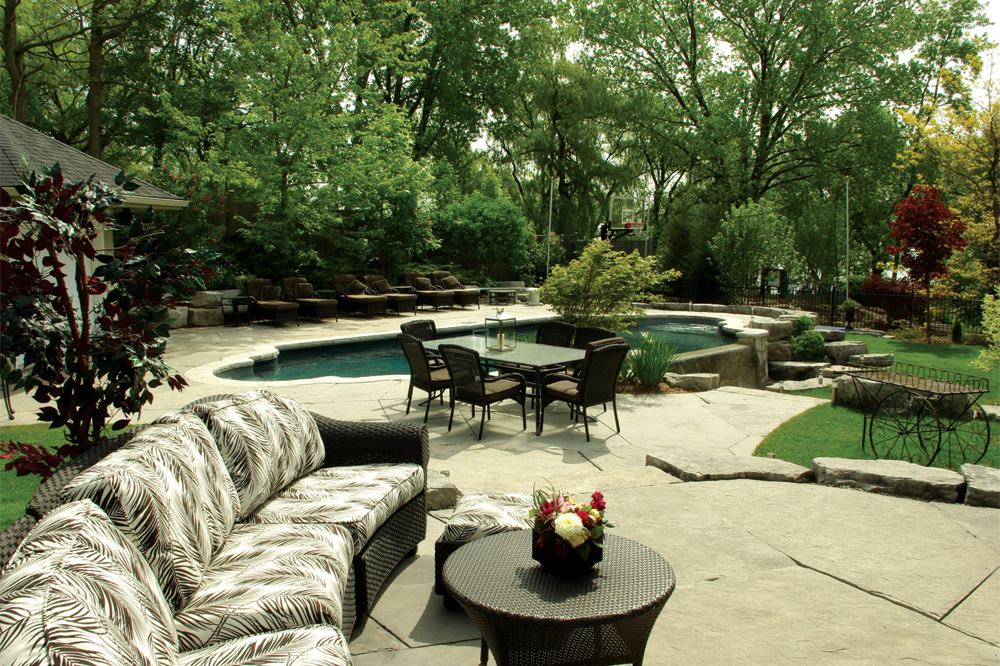Despite a picturesque location off the shores of Lake Ontario, the sloping backyard with more than a meter’s worth of grade difference was a less-than-ideal space to build a pool. Fortunately, the homeowner’s vision of an aquascape with a vanishing-edge waterfall fit perfectly with the topography.
“I thought it would be on the backside of the pool, so it would be more of a vanishing edge to the horizon … but they wanted to be able to see the waterfall from their window,” Stuart Kirkley explains. “That grade difference is what makes the waterfall visible.”
Creating a workable canvas out of the backyard was no small chore. Stan Gorczyca brought his expertise to the project, and helped build the framework of the poolscape.
“It was a tough job to do,” Gorczyca recalls. “The deck was on two slopes, so we had to raise it and support it with the big boulders, place a natural retaining wall, and backfill it with the gravel [and] a lot of careful compaction.”
Gorczyca added an 18-inch layer of coping between the charcoal-colored decking and the pool’s black liner, highlighting the darker shades. The black liner helps create a more natural aesthetic, and integrates the pool with the plantings and rockwork.
“[Black liners] are pretty popular up here for the past few years, since people are trying to achieve more of a northern landscape, lake-type [environment] with the big granite stones,” Kirkley says.
He was able to use standard steel panels to build the pool frame, but had to get creative in attaching the liner to the waterfeature. “The tricky part was attaching the liner at the water’s edge so it would be sealed,” Kirkley says.
“I started thinking, when you do a liner around an in-wall step … if you could do that with the same sort of sealing strip at the top edge of the vanishing edge, you’d be all set.”
To accomplish this, Kirkley called a manufacturer and obtained the sealing components used in the backside of the step. He then built the strip into the concrete form used for the vanishing edge, and attached the liner as if it were on an in-wall step.
“I kept my fingers crossed that it would work, and when it came time to put the liner in, it tightened right up with the sealing strip there,” he says. “The design came together, and [the homeowner] was ecstatic.”





